Wooden puzzles always attract lots of attention at craft fairs and shows. The Tower of Hanoi is easy to make with a rectangular base and turned discs as the pieces. Made from wood, the pieces and the base are attractive to our tactile and visual senses.
This is a quick project and will give you a unique product for your craft fairs or as presents at Christmas. It will also make your booth stand out and give children, and the occasional adult, something to play with as they are shopping! If you need another product to catch their attention a few wooden tops would be great.
I first saw the Tower of Hanoi wooden puzzle in a wood worker’s shop, when I was a young teen. The shop was tucked away in a corner of a quaint fishing village, Mevagissey, Cornwall, UK. I spent some time in the shop enthralled with the challenge of moving the discs from one post to the other while following the simple rules. I wasn’t focused on the math or logic but on physically moving the discs and solving the problem. It was fun.
History of the Tower of Hanoi wooden puzzles
The Tower of Hanoi is a brain teaser first produced by French mathematician Édouard Lucas in 1883. The setting is a monastery in South East Asia (hence the “Tower of Hanoi”). In this story the monks of the monastery have the task of moving 64 discs of increasing size amongst three towers. They were to move the stack from the first tower to the third tower following a simple set of rules. Supposedly, they were given the task at the creation of the world and the world will end when it is completed!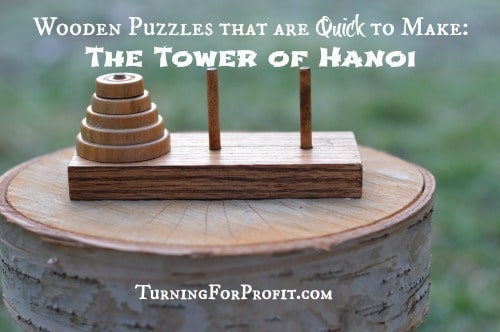
This Tower of Hanoi is a scaled down version of the tale with only 5 discs. The goal is to move the series of discs from one pole to another. You can move only one disc at a time and you can only place it on an empty spot or on a larger disc. That is, a large disc cannot go on a smaller disc. The smallest number of moves for 5 discs is 31.
Making the Tower of Hanoi
I chose a piece of oak pallet wood for my base. You can use any scrap lumber you have in your shop. I picked the oak so that it would contrast with the wood selected for the discs and present a nice feature for the base. I passed the pallet wood through my planer then cut out the necessary rectangle for the base. It is finished with a Danish oil finish.
I used ¼” dowels cut to be about ½” longer than the desired height of the tower of discs. These were commercial dowels lightly sanded and finished with the Danish oil as well.
I initially chose alder wood for the discs but when working with the wood, the end grain was tearing out. I switched to a piece of cherry which was closer grained. The wood turned better with no end grain tearing. I would recommend a contrasting wood between the base and the discs to emphasize the tower.
Turning the wooden discs
I turned the discs on a mini-lathe.
- I drilled the center hole slightly larger than the diameter of the posts.
- I used a skew chisel to turn each disc to its specific diameter. Then a spindle gouge to smooth and shape the face of the disc.
- I sanded each disc and finished with Caranauba wax before parting the disc off of the lathe.
Once off the lathe I finished each disc on the bottom side.
I drilled three holes in the base with a drill press. The drill bit matched the size of the dowels.
Assemble the wooden puzzle
Insert the dowels in the base and slide the discs over the posts and you have your very own Tower of Hanoi. Your first of many wooden puzzles.
As you can see it is a very quick project. You could easily make several over the weekend for Christmas presents or for sale at Craft Fairs.
Build your inventory
If you are going to sell the Tower of Hanoi at craft fairs I would recommend packaging up all but the demonstration model. 5 discs is a small number and it is easy to solve the puzzle. You could increase the discs to 7 or 8 for your wooden puzzles. This should give you an under $ 30.00 price point for your booth.
This puzzle is suitable for children 10 years and older. Children, who are between 8 and 10, may find it challenging, but not out of reach with a little hint now and then. It is not suitable for children under three because of the small parts.
Other items you might consider producing for your booth could be honey dippers, oatmeal Scottish spurtles, and wooden icicles. Other turning projects are available on my build your inventory page.
This post gives you the basic idea on how to make and turn a Tower of Hanoi wooden puzzle. I have an e-book on the Tower of Hanoi as a free gift for signing up for my newsletter.
Click Here for the Tower of Hanoi E-book
This will give you more detail on the specifics of designing and making the Tower of Hanoi wooden puzzle. If you aren’t already a newsletter subscriber, sign up today.


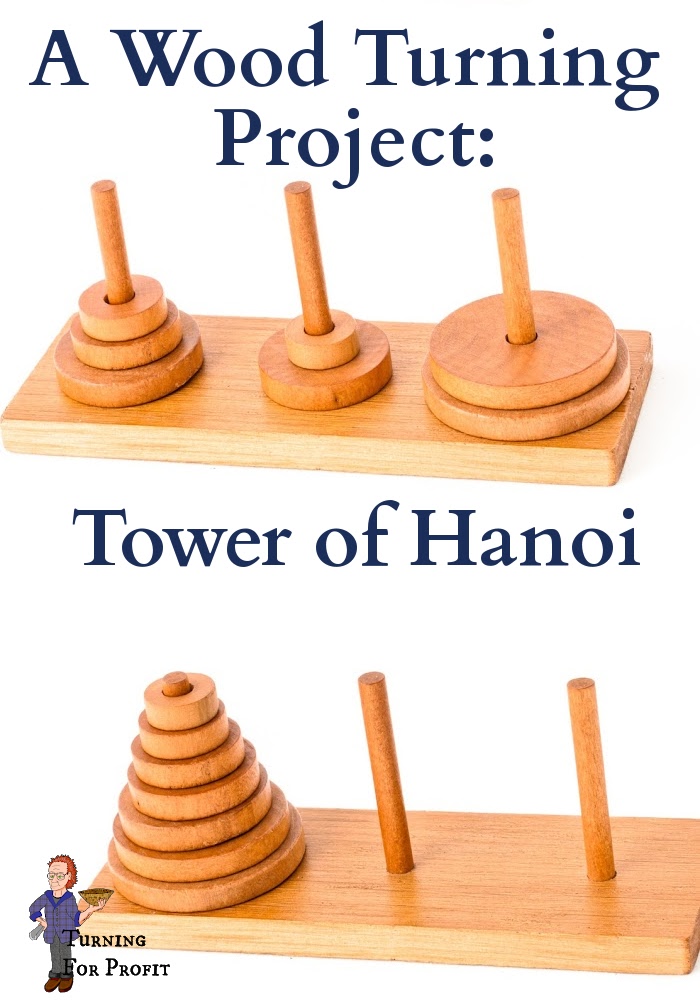
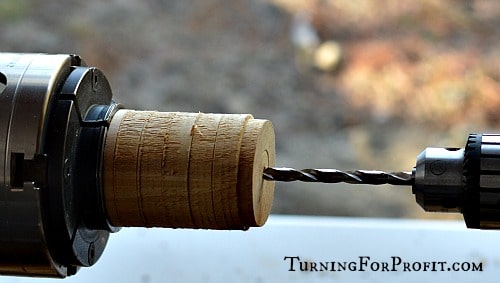
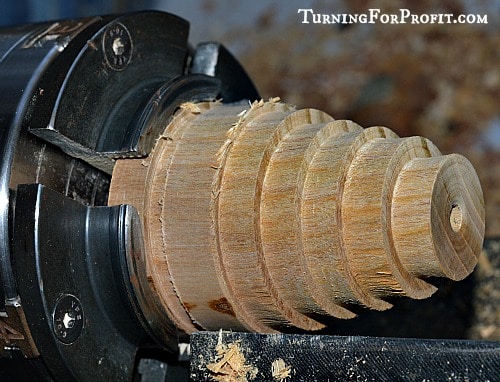
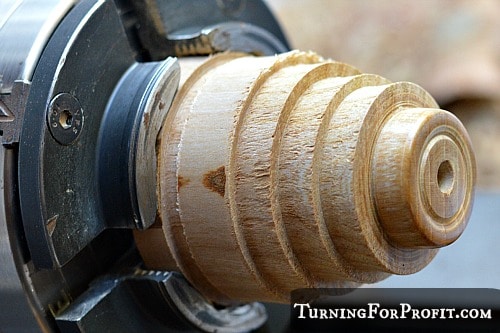
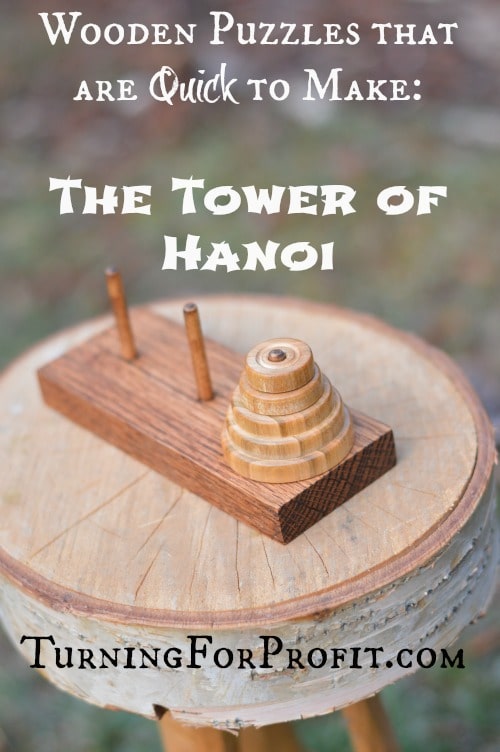





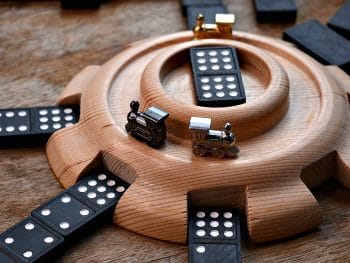



G’day Rob, I just want to say that I am enjoying your blog immensely! I am very much a ‘reborn’ turner. I did a lot of turning whilst at school and thoroughly enjoyed it, then nothing for fifty years until recently. I purchased a second-hand lathe (a little rough and ready but good enough for purpose!), sourced some timber and set to.
At present all this is taking place on the back verandah and ‘she who must be obeyed’ is not well pleased but I hope to be able to move all of the gear into the garage soon (who uses them for cars anyway?).
I have a preference for turning bowls, pots, hollow forms etc. I have made some tee(sic)-light holders out of Banksia wood and they are delightful. Banksia and Melaleuca woods have some simply marvelous colouring. I have also happened across some spalted NorfolkPine which gives a certain ‘Je ne sais quoi’ to the bowls.
Thanks again for the blog and happy posting.
One complaint, that blasted Mother Earth News pop-up! Every new page!!
Should be gone now.
Trivial fact about the Towers of Hanoi….
… which I discovered in high school back in the early 1960s, wondering how to figure out how many moves it takes to move “n” discs.
Graph Moves versus Discs on linear-linear grids and the curve looks exponential, rising to near vertical with a medium number of discs.
Graph it on ‘semi-log’ paper with a vertical ratio scale and a linear horizontal scale and the “curve” turns into a perfectly straight line, and you can extrapolate it for ANY number of discs.
And the answer is… for N discs, the number of moves to completely transfer a stack is (2^N)-1.
Two to the Nth power minus One.
Try it… one disc… 2^1 = 2, minus one = 1, just for starters.
One early appearance of the Towers Problem was in a science fiction story by Arthur C, Clarke in 1967, in which a gang of Tibetan monks were swapping discs as fast as they could, believing that when the last disc was placed that moved the entire tower to another rod, the Universe would come to an end.
They were, in the story, using a stack of 64 discs… If they moved one disc per second, 2^64 – 1 , in seconds, would be somewhat longer than the current age of the universe… 🙂